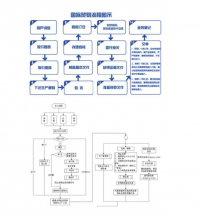浅谈跨文化交际
摘要:随着通信网络的日益发展,不同文化之间的交流也越来越频繁。“跨文化交际”是科学技术时代的产物。改革开放以来,出国留学和游玩的人数不断增加,成千上万的人进入我国。 每年,国际贸易的发展越来越繁荣,随之而来的是不同语言之间的交流。很多人表面上都在学习一种语音、词汇、语言的语言,但这还远远不够。作为一个不容忽视的问题,语言实际上是文化的一部分。进入新世纪,“地球村”每个公民都被卷入了经济一体化和全球化的浪潮。与此同时,人们清楚地意识到全球化不等于一体化。在多元化并存的时代中,每一处都存在着文化差异甚至文化沟壑。培养文化差异的敏感性,缩短文化之间距离,发展跨文化交际能力,已经成为新时代的迫切需求。
关键词:跨文化;交际;全球化
A brief talk on Intercultural Communication
Abstract: As the communication network is more and more developed, the contact between different cultures becomes more and more frequent. "Intercultural Communication" is the product of the age of science and technology. After the implementation of the policy of reform and opening to the outside world, the number of people studying and playing abroad is increasing, and thousands of people enter our country every year. The development of international trade is becoming more and more prosperous, which is followed by the communication between different languages. A lot of people go to school on the surface of a language of phonetic, vocabulary, language, but this is far from enough. As a matter of ignorance, language is actually a part of culture. Entering the new century, every citizen of the "global village" has got caught up in a wave of economic integration and globalization. At the same time, people are well aware that globalization is not equal to monism. There are cultural differences and even cultural gullies everywhere. To cultivate sensitivity to cultural differences, to shorten cultural distance, and to develop the ability of intercultural communication has become a new era of urgent needs.
Key words: cross-cultural; communication; globalization
1Introduction
Cross-cultural communication, which is based on the communication theory, intersects with people, psychology, language, culture and society. But the real exchange and development of culture is only a matter of the last 40 or 50 years. As the name implies, Intercultural communication refers to communication between native speakers and non-native speakers, as well as any communication in the one who has different linguistic and cultural backgrounds. What should we realize the differences between different languages and cultural background. How should we communicate appropriately?
If you want to do cross-cultural communication, you have to meet the following four prerequisites:
A. The two sides who communicate must come from different culture backgrounds
B. Both communicators must communicate in the same language
C. Both sides of the communication are engaged in real time oral communication
D. The communication between the two parties is direct verbal communication.
Under the collision of global economic integration, there will be conflict in cultural exchange. Such exchanges can be manifested as cooperation, assistance, or negotiation, mediation, or even conflict and war, which has resulted in a pluralistic pattern of world day. And it has become brilliant and varied. Facts show that no matter what kind of contact it is, it is necessary for us to communicate, to contact, to meet, to negotiate, and to discuss. This is why the diplomatic arena is particularly exciting. So these so-called "diplomacy" are typical cro-cultural communication, although the development of current technology has made people become closer to each other in time and space. Different nationalities and countries, due to their different historical origins and different social customs, have shaped specific cultural backgrounds, and specific cultural backgrounds have also come into being different value orientations. Such factors as mode of thinking, social norms, pragmatic rules, potential obstacles to cross-cultural communication, inefficient communication, common misunderstanding and possible cultural conflicts will bring unnecessary disasters to human beings.
2Relationship between Communication and Culture
Communication and culture interact with each other, and culture influences the mode of communication, which is presented in communication mode, and communication affects the structure of culture.
Culture is a very broad and most humane concept. In short, culture is the modality of the elements of human life in the region: clothes, crowns, articles, objects, food, shelter, travel, etc. But in the dictionaries of the East and the West, Culture is the whole human spiritual activity and its products relative to politics and economy. It covers the history of mankind from the past to the future. It is the content of all human activities based on nature. It is the whole of all human beings' physical appearance and spirit. Culture has two functions on the one hand. It provides a context for the language, matter, psychology, and three of human society. The content of this aspect is embedded in. On the other hand, culture provides a structural, stable and safe structure for the group and its members, enabling them to integrate into a good operating system. Culture has four basic characteristics. The difference is: culture is holistic; culture is acquired; culture is dynamic; culture is everywhere.
There are two ways of communication, one is verbal communication, non-linguistic communication is two. Language is the most important tool for human communication, is the main expression of human communication. People use language to save and transfer the fruits of human civilization. Language is the ideological communication of the media; it is bound to the politics, economy and society. Science and technology and culture itself influence. Language reflects culture, culture influences language use and development; in cross-cultural communication in a language as the medium of communication, should comply with the rules of cultural pragmatic language. But it is not difficult to find, as a language in a variety of factors under the action of widely spread to the mainland besides, for many of its When people in his region use it, there is a rather complex relationship between language and culture, and the rules of language usage may vary between the two parties in the cross-cultural communication mediated by that language. Culture is a dynamic process of continuous development and change, and the relationship between them is not absolutely one-to-one. In some cases, several cultures may act on the same language and make the language change and form different variants.
Non-linguistic communication means all ways of communication other than language, containing body language, clothing, hairstyle, makeup, etc. But in different cultures, body language has different meanings. Different nationalities have different views on the distance between the two parties, and the frequency of physical contact between the two sides varies with different cultures. There are also much skills on eye exchange: when to look, how long, who can or may not; in some cases, in China and in English-speaking countries, whether smiling or big Laughter is usually a sign of friendship, approval, satisfaction, joy, and pleasure, but on certain occasions, Chinese laughter may cause resentment among Westerners; a slightly different gesture will make it different from the original intention. To communicate effectively in a foreign language, one has to understand the gestures and actions of the speaker when speaking a certain language. And some pundits believe that the two are interdependent. In most cases, this is true. In some cases, the actions of the human body are inconsistent with what is said, and what is spoken verbally is not the same as the meaning expressed in the body language Guess what the speaker means by means of other information or from the whole situation. In a sense, all body language must be understood in a certain context; if you ignore the whole situation, you will misunderstand it. But through the comparative study of Chinese and American body language, we can see that there are similarities between them. It illustrates the importance of knowing body language in another language. non-linguistic behavior go hand in hand with culture: non-linguistic behavior is stipulated by culture and culture determines the time used by non-linguistic behavior.
Contents
1 Introduction 1
2 Relationship between Communication and Culture 2
3 Influence of Cultural Differences on Communication 4
3.1 Social Culture 4
3.2 Mental Culture 5
3.3 Environment 8
4 Treatment of Intercultural Conflicts 9
5 Conclusion 10
Bibliography
[1] Guo-ming Chen. William J.Starasta.跨文化交际学基础[M].上海:上海外语教育出版社,2007
[2] William B.GudyKunst.Young Yun Kim.跨文化交流方法[M].上海:上海外语教育出版社,2007
[3] 贺毅.苏峰.中西文化比较[M]. 北京:冶金工业出版社, 2007
[4] 胡文仲. 跨文化交际学概论[M]. 北京:外语教学与研究出版社,2004
[5] 石坚. 张爱琳.新版高等学校英语专业系列教材:跨文化交际[M]. 重庆:重庆大学出版社, 2011
[6] 卞婧.余叶子. 中西文化在语言上的差异对商务谈判的影响[J].科技资讯,2009(22)





























